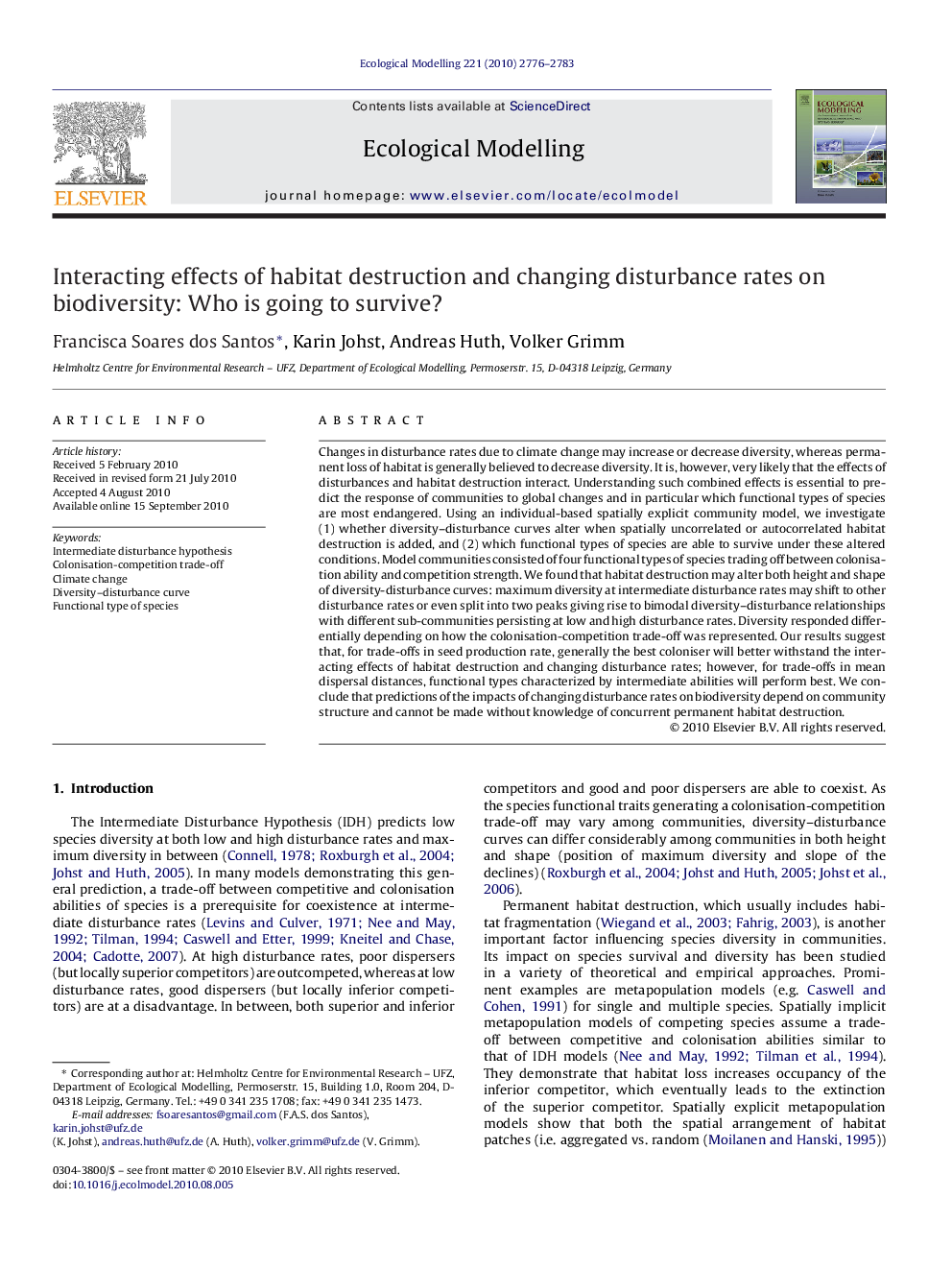| Article ID | Journal | Published Year | Pages | File Type |
|---|---|---|---|---|
| 4377147 | Ecological Modelling | 2010 | 8 Pages |
Changes in disturbance rates due to climate change may increase or decrease diversity, whereas permanent loss of habitat is generally believed to decrease diversity. It is, however, very likely that the effects of disturbances and habitat destruction interact. Understanding such combined effects is essential to predict the response of communities to global changes and in particular which functional types of species are most endangered. Using an individual-based spatially explicit community model, we investigate (1) whether diversity–disturbance curves alter when spatially uncorrelated or autocorrelated habitat destruction is added, and (2) which functional types of species are able to survive under these altered conditions. Model communities consisted of four functional types of species trading off between colonisation ability and competition strength. We found that habitat destruction may alter both height and shape of diversity-disturbance curves: maximum diversity at intermediate disturbance rates may shift to other disturbance rates or even split into two peaks giving rise to bimodal diversity–disturbance relationships with different sub-communities persisting at low and high disturbance rates. Diversity responded differentially depending on how the colonisation-competition trade-off was represented. Our results suggest that, for trade-offs in seed production rate, generally the best coloniser will better withstand the interacting effects of habitat destruction and changing disturbance rates; however, for trade-offs in mean dispersal distances, functional types characterized by intermediate abilities will perform best. We conclude that predictions of the impacts of changing disturbance rates on biodiversity depend on community structure and cannot be made without knowledge of concurrent permanent habitat destruction.
